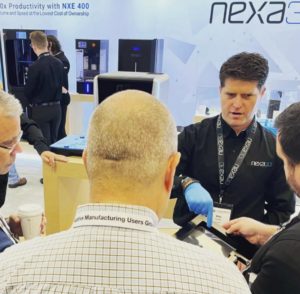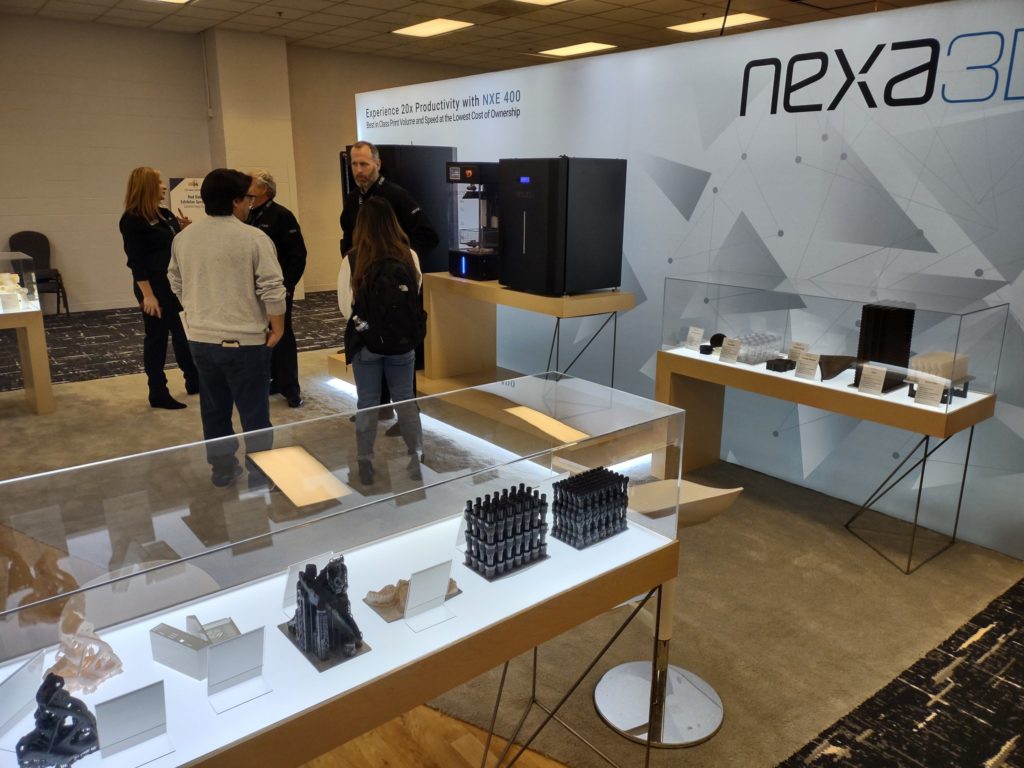- Everything you need to know about ABS 3D printing - March 9, 2023
- How a New Generation of 3D Printers is Accelerating the NPD Process - November 16, 2022
- Buyer’s Guide to an Industrial 3D Printer - October 31, 2022
Technology has played a vital role in allowing events and meetings to continue virtually throughout the pandemic, but a virtual conference does not compare to an in-person one. At the recent Additive Manufacturing Users Group (AMUG) Conference, seeing people in person, networking, and attending live presentations was a breath of fresh air after being stuck behind computer screens for so long.

AMUG is a global community of additive manufacturing professionals, with the tagline “For Users – By Users.” The annual conference brings together experts including engineers, designers, managers, and educators in the field to share expertise, challenges, and developments in additive manufacturing. Nexa3D had a strong presence for our first-ever showing at AMUG 2022, as a Diamond sponsor with four presentations by team members as well as the introduction of the new NXE 200 industrial 3D printer.
Despite how busy we were, we still had plenty of time to experience the conference and take in the current environment of the additive manufacturing industry. While AMUG 2022 did not have an official theme, one word seemed to stand out over the course of the week: production. Additive manufacturing is becoming less and less of a novelty, “look what you can make with this!” type of technology and more of a well-established, “this is exactly HOW you can make this” one. In other words, it’s no longer about hype – it’s about practicality.
AMUG attendees were focused on investing more time in conversation around the entire ecosystem of 3D printing, rather than just the shiny printers themselves. What goes into design, software, post-processing? While prototyping is never off the table, most attendees were interested in talking about the process of getting a production part into their hands.
Some conversations centered around how additive manufacturing can complement other production processes; there was one workshop on metal casting, for example. Attendees also showed a great deal of interest in Addifab’s newly Nexa3D-powered Freeform Injection Molding platform, cemented through our recently announced partnership and utilizing the NXE 400 for ultrafast and scaled-up 3D printing of injection molding tooling.
Nexa3D’s presentations were well-attended, starting with the “Design for LSPc” training session given by Head of Operations Brent Zollinger. With a well-educated audience in attendance, Brent addressed not just design principles but the physics of the additive manufacturing process, and the critical aspects of designing a part with throughput in mind.
Chief Technology Officer Izhar Medalsy delivered the presentation “The Evolution of Resin 3D Printing to Ultrafast Capabilities.” He discussed the advancement of photopolymer technologies, including the whole workflow rather than just the technology itself – starting with identifying what makes a good 3D printed part, then design and pre-preparation into printing and post-processing.

A workshop entitled “The Realities of Truly Rapid 3D Printing with SLA at the Desktop” showcased new possibilities with ultrafast 3D printing at the desktop. The workshop involved a demonstration of Nexa3D’s new XiP desktop 3D printer, with a deep dive into what makes it different from other options out there today. Attendees were among the first to see the XiP in action, with several noting that it is more robust and industrial-quality than other desktop printers they had seen. They were also interested in the open materials platform for the XiP and the prospect of being able to validate their own resins for use with the printer – or use already validated materials to be essentially immediately up and running.
Finally, Director of Business Development Sean Dsilva presented “Material Developments in Resin 3D Printing.” Tracing the evolution of materials in the resin 3D printing ecosystem to today’s capabilities, this session highlighted a growing landscape of prototyping-to-production possibilities. Sean’s presentation received a great deal of engagement particularly from the dental industry, who were especially interested in Nexa3D’s validated Keystone dental 3D printing resins.
We had a chance to check out a few of the non-Nexa3D presentations as well, and were impressed by the variety of topics. Ford Motor Company’s Ellen Lee offered a how-to guide on how to achieve application readiness for automotive production additive manufacturing, focusing on their own process and how to validate additive manufacturing for production materials and parts. She discussed testing methods, design rules, and how to achieve process repeatability in order to move toward a true production ecosystem. A United States Army presentation focused on the deployment of additive manufacturing at points of need, where it can be truly operative, while an interactive workshop discussed medical certification and regulation for additive manufacturing devices.
Again, the presentations largely focused on production and quality, examining aspects such as metrology and inspection in addition to the printing process itself. Ironically, while COVID damaged many industries, it actually may have pushed additive manufacturing forward, as people looked for new ways to produce and do business. The hype truly has died down in favor of advancement – additive manufacturing is here, it’s established, and now we need to look at how far we can take it in terms of production.
Finally, while the presentations and brilliant exchange of knowledge is obviously a highlight at AMUG, our team was thrilled to simply be around the industry again. From formal sessions to casual conversations in halls to new meetings in our busy booth, we loved the face time with the industry – no FaceTime (or Zoom) required!

